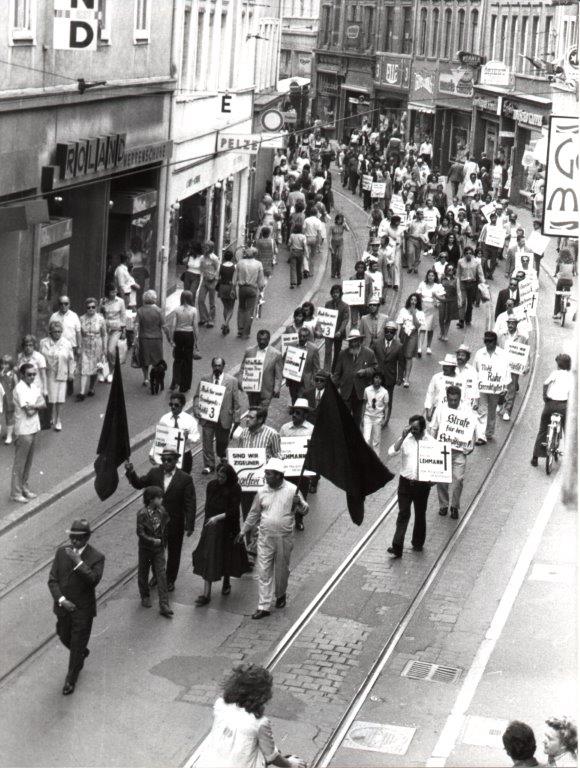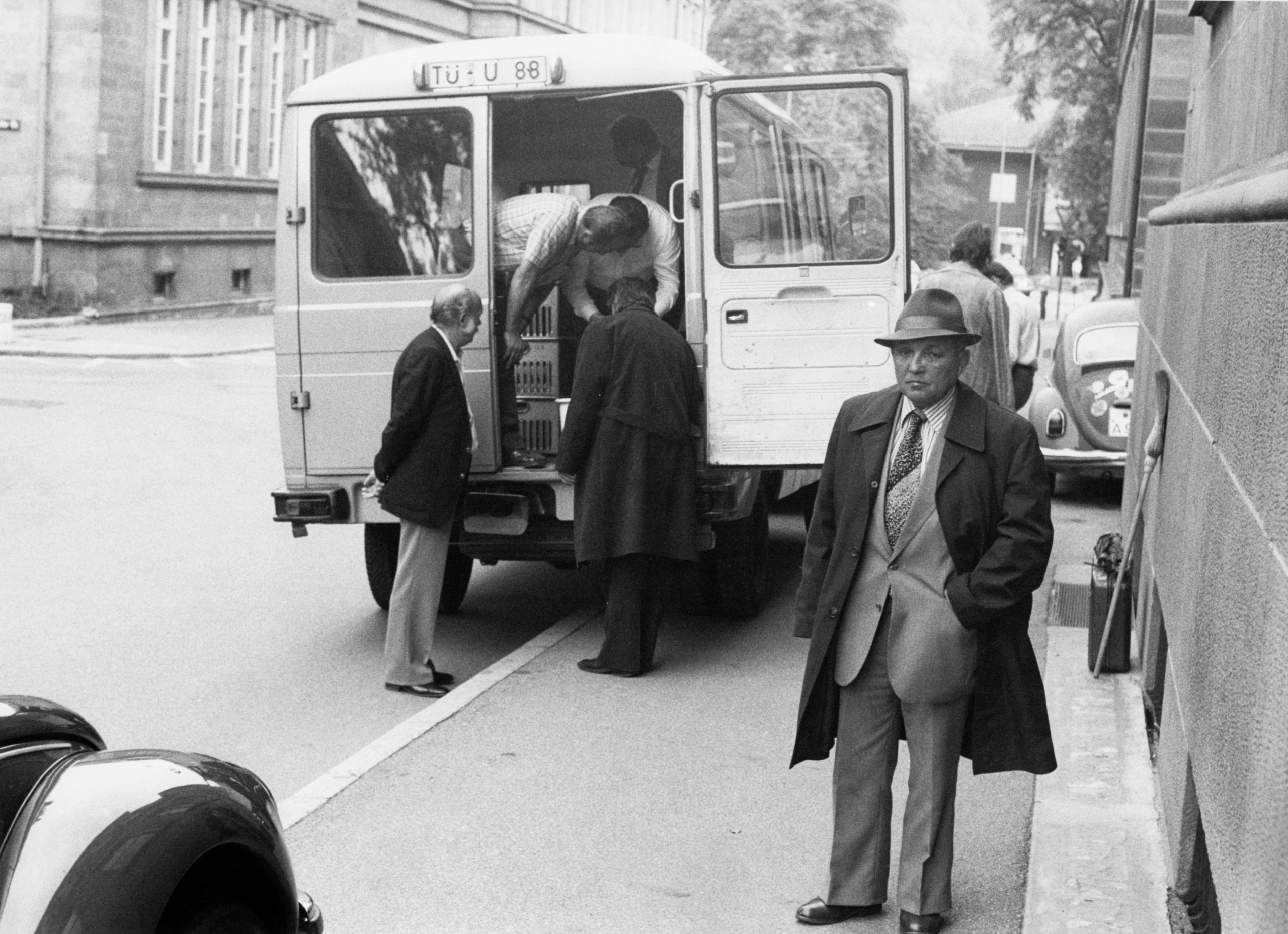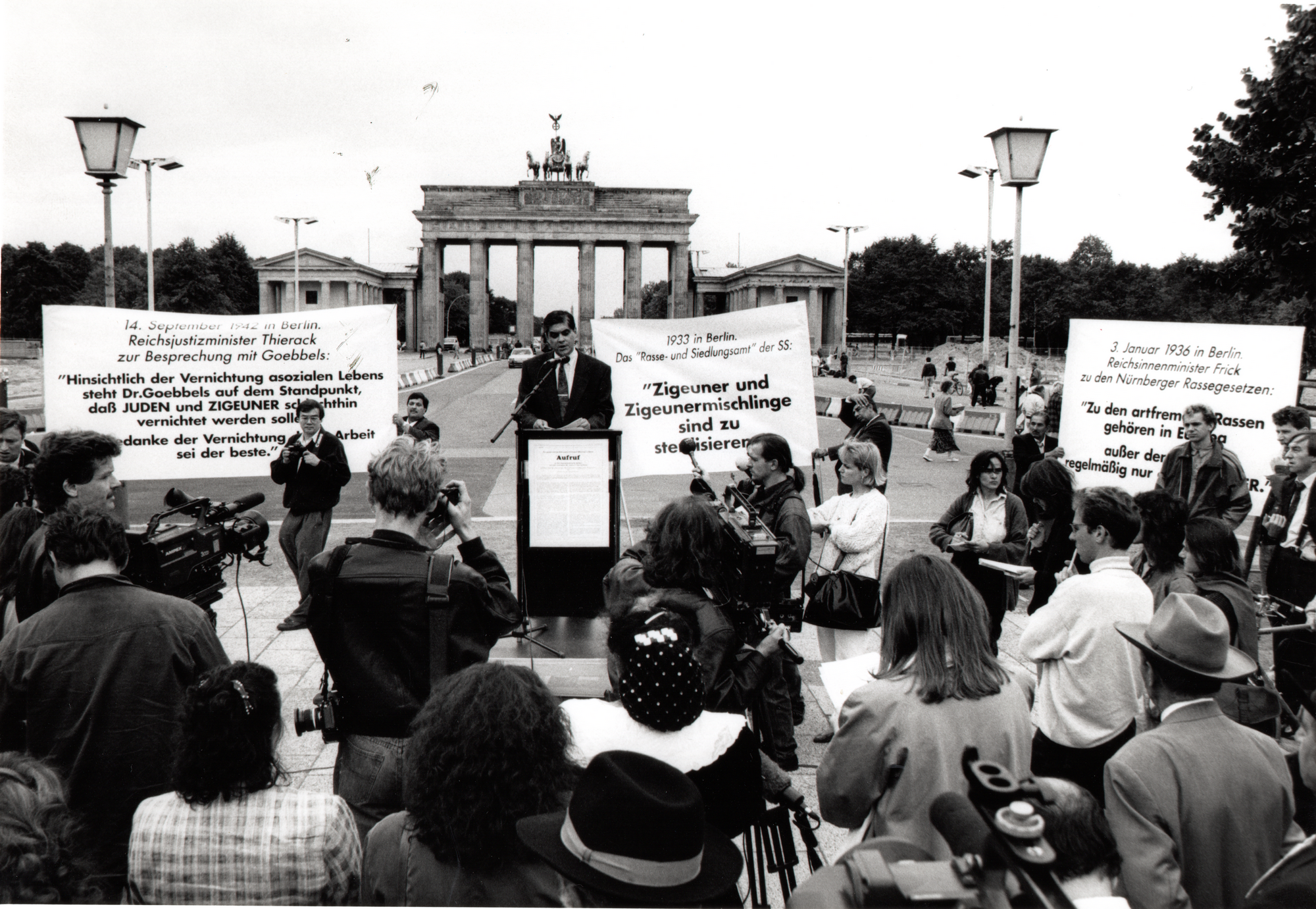Removal of the “Nazi race files” to the Federal Archive in Koblenz, following the occupation of the Tübingen University archive in September 1981; in the foreground, Holocaust survivor Jakob Bamberger; photo: Documentation and Cultural Centre of German Sinti and Roma.
The search for the Nazi race files
Even after the hunger strike in Dachau, there was still a lack of clarity about the documents on the planning of the Nazi genocide. Officers in the German criminal police and “race researchers” had kept these documents secret for decades. As a result, important evidence concerning the Nazi persecution of the Sinti and Roma had been suppressed.
Locating these Nazi race files and having them transferred to the Federal Archive in Koblenz in order to make them available as documentation of the genocide was an important objective of the German Sinti and Roma civil rights movement. Follow-up investigations established that “race researchers” had for decades continued to use the hidden files for their pseudoscientific research.
In September 1981, eighteen Sinti occupied the basement of the Tübingen University archive and demanded the immediate removal of the Nazi race files to the Federal Archive. After a few hours, the documents were indeed transferred there. However, these did not include the approximately 20,000 “Rassengutachten” (race reports) drawn up by the “Racial Hygiene Research Centre” that had served as the basis for the Nazi persecution. The civil rights movement sought to clarify the whereabouts of these “race reports” via a number of court cases. Simon Wiesenthal supported Romani Rose in seeking to clear up this scandal. However, the files have disappeared without trace and remain so to this day.

The early days of civil rights work of German Sinti and Roma
Exhibition “The long path to recognition of the Roma and Sinti Holocaust”

First public civil rights campaign against racism
Exhibition “The long path to recognition of the Roma and Sinti Holocaust”

The hunger strike at the former concentration camp in Dachau
Exhibition “The long path to recognition of the Roma and Sinti Holocaust”

The search for the Nazi race files
Exhibition “The long path to recognition of the Roma and Sinti Holocaust”

The recognition of the Nazi genocide of the Sinti and Roma
Exhibition “The long path to recognition of the Roma and Sinti Holocaust”

Protests against special registration by the police
Exhibition “The long path to recognition of the Roma and Sinti Holocaust”

No appropriate compensation for Sinti and Roma persecuted by the Nazi regime
Exhibition “The long path to recognition of the Roma and Sinti Holocaust”

Remembrance in Auschwitz
Exhibition “The long path to recognition of the Roma and Sinti Holocaust”

The world’s first permanent exhibition on the Nazi genocide of the Sinti and Roma
Exhibition “The long path to recognition of the Roma and Sinti Holocaust”

Clemency for the murderers – the Judiciary reviews Nazi crimes
Exhibition “The long path to recognition of the Roma and Sinti Holocaust”










